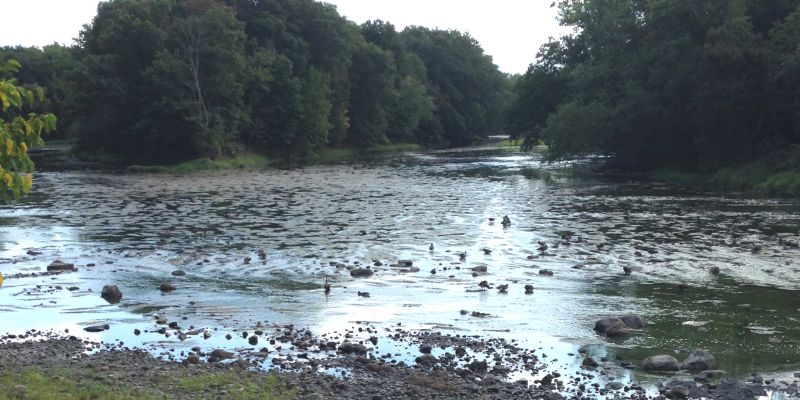
The Mighty Mighty Wallkill (as I call it), is in my backyard. As it winds through Gardiner, this bucolic stream is both a scenic treasure and a source of concern. Yes, we have all read that our river is currently not fit for swimming. Does that mean all is lost? No! Just as the Hudson River has been going through a cleansing transformation, the Wallkill can too.
The Wallkill River is a tributary of the Hudson River, one of only 30 rivers in the US and about 60 throughout the entire world that flow north. The Nile, which is the longest river on Earth, flows north just as does the Wallkill. That puts us in quite famous company! So, let’s fix it. How?
First, data is needed. That’s where Riverkeeper and its partners excel. For the past five years volunteers have been taking monthly samples at 24 sites from May through October. Samples come from as far as the source waters at Lake Mohawk in Sparta, NJ, to the river’s end at Tillson below Sturgeon Pool, a distance of 83 miles. Gardiner sites are near the US Geological Survey stream gauge just south of the bridge and the Shawangunk Kill tributary below Tuthilltown.
Second, the data needs to be analyzed. Again, Riverkeeper performs the lab work, charting, and disseminating the information. Currently we test for Enterococcus or “entero,” a bacterium that is an indicator of fecal contamination. According to Dan Shapley, water quality program manager for Riverkeeper, 87% of the samples exceeded Environmental Protection Agency guidelines for swimming. Major contributors to the pollution include human waste from inadequate sewer systems and manure runoff from cattle and horse farms.
Third, action must be taken. Once the water quality results are understood, an action plan must be put in place. Next steps have already begun, including weekly testing for one month at specific sites to determine precise locations of contamination. Only when this specific detail is known can the river be rehabilitated.
Yes, the water quality numbers are not so good right now. However, there has already been evidence of improvement along the river’s NJ-NY line and at the border of Orange and Ulster counties.
How can we help improve the Wallkill River and make it safe again for swimming? Check out the Riverkeeper site: www.riverkeeper.org for opportunities to join, volunteer, donate, and advocate for clean water. Even closer to home is the Wallkill River Watershed Alliance: www.wallkillalliance.org. On a personal level, we should check our own septic systems for efficiency. Finally, if we see a pollution problem, say something! We are all part of the problem. Let’s all be a part of the solution!
